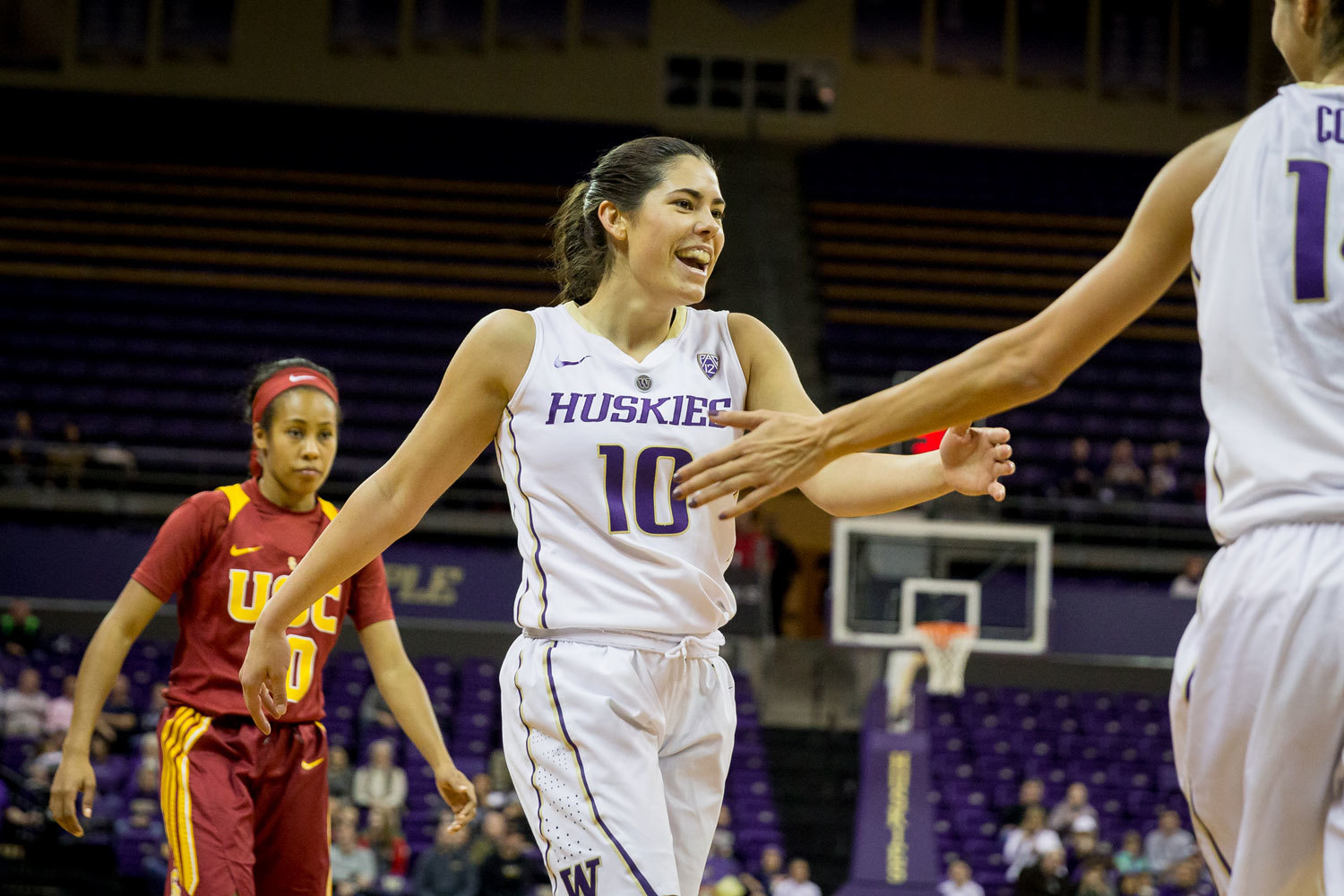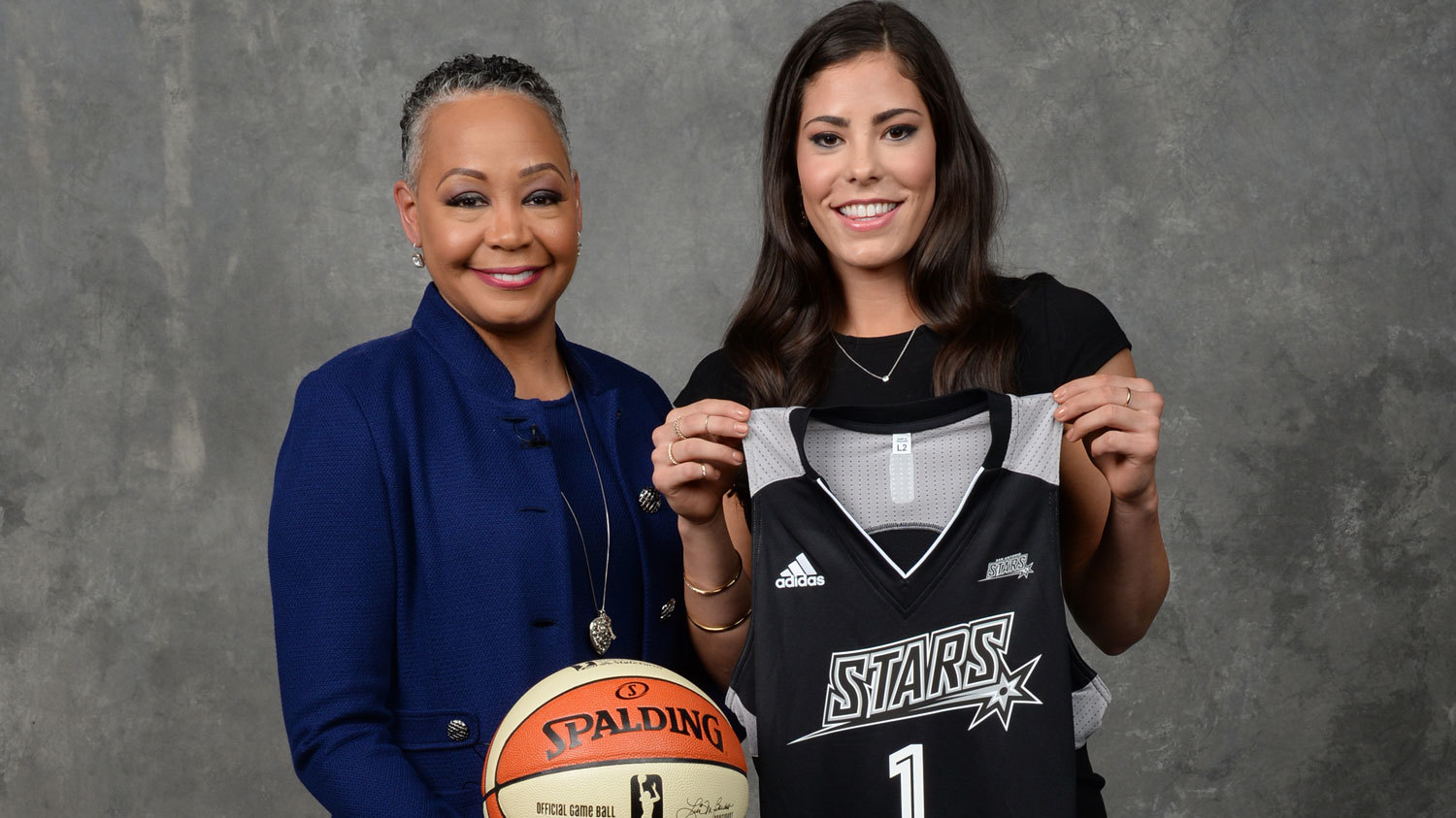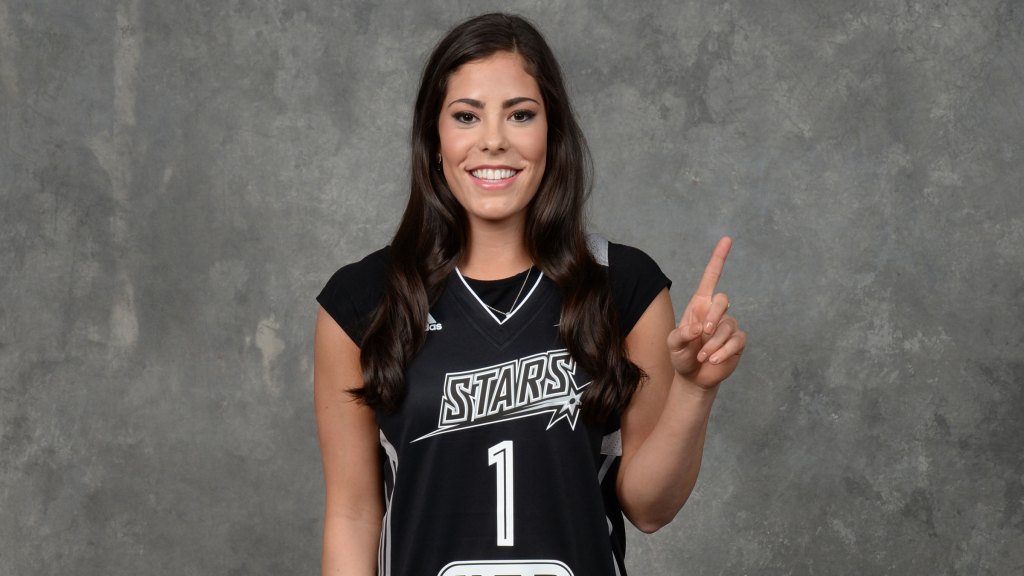Breanna Stewart and Kelsey Plum have much in common. Yes, Stewart is 6’5 and Plum 5’8, but in terms of pure production, their senior seasons were remarkably similar: Plum was worth 1.207 points per possession for the University of Washington this season, per Synergy Sports, virtually identical to Stewart’s 1.208 points for the UConn Huskies last year. Both women have come to the professional ranks ready not only to succeed on the court but to maximize their brand off it, complete with superstar representation—they share an agent in Lindsay Kagawa Colas at Wasserman.
Stewart and Plum were also the top overall picks in the 2016 and 2017 WNBA drafts, respectively, but it’s there that their stories begin to diverge.
Videos by VICE
Read More: Texas Had a Good Night at the WNBA Draft
By this time last year, Stewart had a clearly defined future with the Seattle Storm and was well on her way to certain WNBA stardom. Nearly one week after the 2017 draft, however, Kelsey Plum still lives in limbo, selected by the San Antonio Stars but not at all certain to ever play a game for them.
In 2016, it was well understood that the lottery, not the draft, would decide which WNBA team was going to be building its future around Stewart, a generational player whose size and skills translate to virtually any position. When Seattle won the first overall pick, Storm coach Jenny Boucek didn’t even pretend the team might consider trading it. That certainty meant Stewart had months to prepare for Seattle, and vice versa; almost immediately, marketing campaigns began to position Stewart as a face of her new team and the league.
Stewart excels at this part of the job. It’s one reason she could be seen on SportsCenter recently, responding to Candice Wiggins’ claims about WNBA players despite having played just a single year in the league.
Plum, too, plays the inside game well. After accepting the Associated Press Player of the Year trophy in Dallas during the women’s Final Four, for example, she came off the podium and greeted many of the reporters by name, even East Coast–based scribes a PAC-12 player might not normally know.

Plum on the court for the Huskies this year. Courtesy University of Washington
But while Plum combined peak efficiency with astounding volume in her last college season, setting both season and career NCAA records for points scored, the San Antonio Stars, who had earned the top pick in September, agonized over their choice.
Unlike Stewart, who essentially exists as her own position, peak Plum comes with the ball in her hands as a point guard. She’d likely thrive as a shooting guard as well, given her ability to shoot and penetrate, but at her size, those are her only real options.
Those also happen to be the only set positions on the Stars, who have built one of the most compelling young backcourts in the league in Kayla McBride, the third overall pick in 2014 and an All-Star by 2015, and Moriah Jefferson, the second overall pick in 2016, just after her college teammate Stewart went to the Storm. There are potential three-guard lineup options, but these were not appealing to new Stars coach Vickie Johnson, according to a source familiar with her thinking.
Accordingly, as the hours dwindled on draft day, the question wasn’t so much whether San Antonio would trade Kelsey Plum but to whom.
Dallas, with three picks in the top ten, engaged in talks, but balked at the San Antonio’s asking price of all three for Plum. Washington, already having acquired Elena Delle Donne from Chicago and Kristi Toliver from Los Angeles this off-season, offered their sixth overall pick in 2017 and their first rounder in 2018. Minnesota, Seattle—you name it, teams came to San Antonio trying to get Kelsey Plum.
At last, at the 11th hour, it appeared a deal had been struck. Chicago, in need of a face of the franchise to replace Delle Donne, wanted Plum, either to keep for her star power or to trade for one of the packages that had been offered to San Antonio. Once the draft got underway, the Stars selected Plum. With the second overall pick, the Sky took Alaina Coates, the South Carolina big whom San Antonio coveted. Chicago had absolutely no place for another center on their roster. A number of players, Plum included, came to believe the deal was done.
And then it didn’t happen. San Antonio walked away, and kept Plum.

Plum with WNBA president Lisa Borders after the draft. Photo by Jennifer Pottheiser/NBAE
At some level, the Stars’ decision is easy to understand. This was general manager Ruth Riley’s first draft, and with the top overall pick, all eyes would have been on her. Coates is a solid, traditional five, but a difference maker worth trading the draft’s most likely All-Star? Probably not.
“The Spurs drafted Tim Duncan when they already had David Robinson, and that worked out pretty well for them,” a Stars front office member noted wryly.
But the sequence of events that led to San Antonio’s decision has created a difficult situation for everybody involved. Plum is aware that Johnson wasn’t eager to add her—not only would she be coming to a challenging new situation to play in a relatively unprecedented small lineup, she’d be doing it for a coach who didn’t believe in her.
Plum is not without recourse. By WNBA rules, she can sit out the season, and as long as she doesn’t play internationally, either, San Antonio will lose the rights to her. She can re-enter the draft, and the Stars will end up with nothing to show for their No. 1 overall pick. A source familiar with Plum’s thinking indicated that there’s every possibility that could happen should San Antonio keep Plum. Later this week, Plum heads to San Antonio for some media appearances. The front office hopes that the experience of seeing it all up close will lead to a resolution.
In the meantime, the continuing drama holds much of the rest of the league hostage. Should the Stars decide to deal Plum, the Sky would happily deal Coates to get her. But if San Antonio doesn’t deal Plum, the Sky don’t want Coates, and would trade her elsewhere. Other teams eager to acquire Plum from the Sky, should a deal go through, are still plotting, crafting contingencies should they have the good fortune to add Plum. The season is less than a month away, though, so the Sky really need to make a decision. So do the Stars. So do other teams. So does Plum, who has yet to sign and for whom “all options are on the table at this point,” according to a source familiar with her thinking.
There are many losers in this scenario. For Plum, who has fantasized about playing in the WNBA since she was ten years old, the realization of a lifelong dream would be deferred, as would a season’s worth of earning power; it would be one year longer until she can move beyond the relatively spartan WNBA rookie contract scale. For the Stars, a long-sought-after top overall pick would leave them, instead, with no on-court help, and an unwelcome distraction off the court. And for the WNBA, which managed to leverage Stewart’s pre-existing stardom and highlight-reel plays into significant interest in 2016, the inability to repeat that game plan with Stewart in 2017 would be a lost opportunity on multiple fronts.
There are plenty of parallels between Plum’s draft intrigue and previous situations in other sports—think Eli Manning using the NFL Draft to leverage his way out of San Diego, for example. But this is all pretty unprecedented for the WNBA. In yet another way, Plum is like nothing that’s come before her.
Want to read more stories like this from VICE Sports? Subscribe to our daily newsletter.




